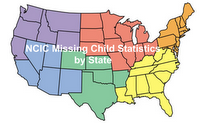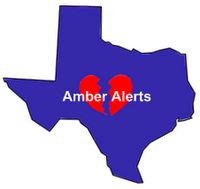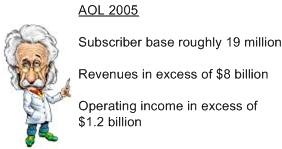Friday, July 28, 2006
President Bush signs HR 4472
The legislation, called the Adam Walsh Child Protection and Safety Act of 2006, is named for Adam Walsh, a 6-year-old boy who was abducted 25 years ago on July 27, 1981, and eventually killed.
Read more
Thursday, July 27, 2006
Bill expected to be signed today
"...The bill still needs to have funding passed separately, Walsh says. "Legislation without oversight and without money is just a photo-op."
Projected cost $1.2 billion for the first couple years. The bill calls for:
• 500 new U.S. marshals. "They will only look for rapists and sexual predators of children," Walsh says.
• 35 new FBI agents, "dealing with only with cyber crimes over the Internet."
• Expanded efforts to catch pedophiles who use the Internet. Walsh credited NBC's "Dateline" and Oprah Winfrey for demonstrating the size of the problem.
• A standardized sex offender registry in each state.
• The collection of DNA from all convicted sex offenders.
• A requirement that convicted pedophiles submit a new photo to authorities every three months..."
Read the entire article
Wednesday, July 26, 2006
When a child goes missing
Why are the major news outlets covering Destiny Norton's death but had little interest in her disappearance or search?
How many reported missing children cases have actually been resolved by the National Center for Missing and Exploited Children ® (NCMEC) since 1984?
What are the resolutions of those cases? Recovered unharmed/harmed? Not recovered? Murdered?
How do they compare statistically with all missing children reported during the same timeframe but not reported to NCMEC?
Why does the NCMEC refer to statistics, concerning murdered children, from the Office of the Attorney General of Washington State which was a study conducted in 1997? Are these statistics still relevant today?
View their site and are they basing their conclusions on studies that are four years old?
“…How many missing children are there?
Answer: The problem of missing children is complex and multifaceted. There are different types of missing children including family abductions; endangered runaways; nonfamily abductions; and lost, injured, or otherwise missing children. The best national estimates for the number of missing children are from incidence studies conducted by the U.S. Department of Justice's Office of Juvenile Justice and Delinquency Prevention.
To date two such studies have been completed. The first National Incidence Studies of Missing, Abducted, Runaway, and Thrownaway Children (NISMART-1) was released in 1990, and the second, known as NISMART-2, was released in October 2002. …”
In the year 2006, with all the technology available and all their technology partners, shouldn’t they have more current information? They receive approximately $40 million annually to fulfill their National Mandate and Mission. They tout the number of tips, calls etc and their 94% recovery rate so they must have some basis for the numbers.
“…The National Center for Missing & Exploited Children’s® (NCMEC) mission is to help prevent child abduction and sexual exploitation; help find missing children; and assist victims of child abduction and sexual exploitation, their families, and the professionals who serve them.
NCMEC was established in 1984 as a private, nonprofit 501(c)(3) organization to provide services nationwide for families and professionals in the prevention of abducted, endangered, and sexually exploited children. Pursuant to its mission and its congressional mandates (see 42 U.S.C. §§ 5771 et seq.; 42 U.S.C. § 11606; 22 C.F.R. § 94.6), NCMEC ..”
The National Child Search Assistance Act of 1990 requires each federal, state, and local law-enforcement agency to enter information about missing children younger than the age of 18 into the Federal Bureau of Investigation's (FBI) National Crime Information Center (NCIC) database. The Act also establishes state reporting requirements.
Can statistics not be extracted from the NCIC database?
Tuesday, July 25, 2006
Destiny Norton
Destiny found dead
Police arrest a man living next door
By Nate Carlisle The Salt Lake Tribune
The Salt Lake Tribune reported the body of Destinty Norton had been found in the basement of her next door neighbor, Craig Roger Gregerson, 20.
Monday, July 24, 2006
America's Most Wanted coverage
By all accounts, her story has been mostly a regional story with little, if any, national coverage. Since her pictures and story have been on the internet for over a week, will a short blurb on AMW help that much?
It is somewhat ironic with the vote on H.R. 4472, the ‘‘Adam Walsh Child Protection and Safety Act of 2006’’ and the upcoming 25th anniversary of his death, you might have thought there would have been more coverage of her disappearance.
Saturday, July 22, 2006
‘‘Adam Walsh Child Protection and Safety Act of 2006’’.

H.R. 4472 ‘‘Adam Walsh Child Protection and Safety Act of 2006’’.
You know the old saying, “…To many Chef’s can spoil the broth…”? Read through this 164 page PDF, and perhaps it will help explain why it took so long to pass and could take three years to implement.
However this is one broth that in the end we trust will turn out well for the victims of these crimes.
Was the voice vote unanimous and the reason no representatives position was kept?
Votes on Passage
Mar 8, 2006: This bill passed in the House of Representatives by voice vote. A record of each representative's position was not kept.
Jul 20, 2006: This bill passed in the Senate by Voice Vote. A record of each representative's position was not kept.
A picture's worth a thousand words
 A month ago there was discussion over whether the Irving, Texas police department followed proper procedure for issuing an Amber Alert for two year old Elian Majano. One month later, the child is still missing and the alert is still in effect.
A month ago there was discussion over whether the Irving, Texas police department followed proper procedure for issuing an Amber Alert for two year old Elian Majano. One month later, the child is still missing and the alert is still in effect.Read more
Friday, July 21, 2006
Hurry up and wait.
Why will it be required to be up and running within three years. Wonder what the statistics published concerning offenses committed during this time frame will be?
If each state maintains these records on-line now, why will it take three years to ensure implementation? Is it possible each state doesn't keep accurate records now and needs three years to "find" sex offenders?
What are the penalties to each state if they don't comply? We know what it can be for society.
Thursday, July 20, 2006
Book of lists

If you believe the wheels of justice turn slowly, you might want to read about the National Sex Offender Registry bills introduced over a year ago. Expected to be voted on today, it could be signed into law July 27th.
Library of Congress
S.1086 Title: A bill to improve the national program to register and monitor individuals who commit crimes against children or sex offenses. Sponsor: Sen Hatch, Orrin G. [UT] (introduced 5/19/2005) Cosponsors (42) Related Bills: H.R.2423 Latest Major Action: 5/8/2006 Held at the desk.
H.R.2423 Title: To improve the national program to register and monitor individuals who commit crimes against children or sex offenses. Sponsor: Rep Foley, Mark [FL-16] (introduced 5/18/2005) Cosponsors (86) Related Bills: S.1086 Latest Major Action: 6/9/2005 House committee/subcommittee actions. Status: Subcommittee Hearings Held.
According to Congressman Mark Foley (FL-16), "...there are currently over 500,000 registered sex offenders in the United States – with 24,000 of them living in North Carolina and Virginia alone. Of that, according to the National Center for Missing and Exploited Children, we are missing between 100,000 to 150,000 of these predators.
What may be even more surprising to you is that there is a 200,000 person difference between all of the state registries and the federal National Sex Offender Registry (NSOR).
The House and Senate may vote today on the proposed bill which would make it a crime for sex offenders not to register with their state and would require states to share information when an offender moved to a new state...:
If approved, the new sex offender registry would replace the state-by-state system now in place. Under current law, offenders usually report once a year. Failure to report is a misdemeanor.
Could bill have helped Destiny Norton?
Wednesday, July 19, 2006
Profile of a child killer
The average killer of abducted children is 27 years old
85 percent are unmarried
Half are unemployed
51 percent live either alone or with their parents
61 percent have prior arrests for violent crimes
66 percent have a legitimate reason to be in the area where the abduction takes place
Source: Attorney General of Washington State, U.S. Department of Justice
Read more click here
Tuesday, July 18, 2006
Profile of an abducted and murdered child
76 percent of children killed by their abductor are girls
The average age is between 11 and 12 years old
57 percent are victims of opportunity
14 percent are chosen because of some physical characteristic
Well over half of all child abductions that lead to murder happen within three blocks of the victim's home.
Source: Attorney General of Washington State, U.S. Department of Justice
Read more click here
Monday, July 17, 2006
They care....but not that much
The following is a brief summary of the Act introduced in 2003 as HR 1104 Child Abduction Prevention Act.
“…Child Abduction Prevention Act - Title I: Sanctions and Offenses - (Sec. 101) Amends the Federal criminal code to:
(1) make the authorized term of supervised release after imprisonment any term of years or life, and to require a sentence to include a term of supervised release of at least five years, for kidnaping involving a minor and for other specified felony offenses (aggravated sexual abuse, sexual abuse, abusive sexual contact, sexual exploitation of children, selling or buying of children, certain activities relating to material involving the sexual exploitation of minors and material constituting or containing child pornography, production of sexually explicit depictions of a minor for importation into the United States, transportation for illegal sexual activity, coercion and enticement to engage in criminal sexual activity, transportation of minors with intent to engage in criminal sexual activity or in a sexual act with a juvenile, or use of interstate facilities to transmit information about a minor with intent to solicit any person to engage in criminal sexual activity) (listed offenses);
(2) include aggravated child abuse and child torture murders within the scope of the definition of first degree murder; and
(3) increase penalties for sexual exploitation and other abuse of children, for transportation for illegal sexual activity and related crimes, and for kidnapping children…”
Why would you, if you were a member of Congress, either vote No or Not vote at all?
Democratic
No
John Conyers, Jesse Jackson, Stephanie Jones, Barbara Lee, Jim McDermott, Alan Mollohan, James Oberstar, Martin Sabo, Robert Scott, Pete Stark, Maxine Waters, Melvin Watt
Not voting
Corrine Brown, William Clay, Richard Gephardt, Karen McCarthy, George Miller
Independent
No
Bernard Sanders
Republican
No
Ron Paul
Not Voting
Steve Buyer, Larry Combest, Ernest Fletcher, Henry Hyde, Thad McCotter
Saturday, July 15, 2006
Food for thought
 When designing sales territories, an analogy of approaching the territory like a pie has often been suggested. In other words, do you believe there are only a certain finite number of slices in the pie, so you need to protect your slice (share), or is the pie so large collectively you could never eat the entire pie. The size of the slice doesn’t matter.
When designing sales territories, an analogy of approaching the territory like a pie has often been suggested. In other words, do you believe there are only a certain finite number of slices in the pie, so you need to protect your slice (share), or is the pie so large collectively you could never eat the entire pie. The size of the slice doesn’t matter.I posted this on “When a child goes missing” concerning the number of reported missing children. The NCMEC receives approximately $40,000,000 annually from the Department of Justice and donations.
A quick search of the National Center for Missing & Exploited Children (NCMEC) will provide the following information for the period 07-01-06 thru 07-15-06.
Endangered missing 2
Endangered Runaway 10
Family abductions 0
Hague cases 0
Lost, Injured, missing 0
Missing 0
Non Family abductions 1
Unidentified 0
Unknown 0
There are according to Department of Justice statistics, over 800,000 reported missing children every year. That would be @67,000 per month. If the cases reported to NCMEC have been resolved, may be they should add a category. There is a major discrepancy between @67,000 per month historically reported missing and so far this month, 13 missing children, all between the ages of 14-18 years old?
Based on these statistics, how should the funding pie be sliced? Would the DOJ funding be better distributed locally or statewide or charities/organizations directly involved with finding missing children? It appears that is where the cases are being resolved. Do statistics exist to indicate otherwise?
Friday, July 14, 2006
Ad content FTC or DOJ?

If you look up Advertising in Webster’s you will find this definition:
Main Entry: ad·ver·tise
1 : to make something known to : NOTIFY
2 a : to make publicly and generally known
intransitive verb : to issue or sponsor advertising
- ad·ver·tis·er noun
According to the FTC,…."You don't need a crystal ball to know that the FTC will continue to stop unfair and deceptive trade practices," said J. Howard Beales III, Director of the FTC's Bureau of Consumer Protection. "We want consumers to know that when companies make a promise in an ad, they need to deliver."
Wouldn’t it be ironic if the Federal Trade Commission working around the domain issue, found these to be “ads” instead and therefore guilty of deceptive advertising practices through misleading placement of the text in their “ads”? They are selling porn and these are enticements to visit the site for purchases. Aren’t these porn sites trying to sell something? Even if the site is an affiliate program, technically they may earn money for your visit.
Are you being promised missing child information or teen porn?
Thursday, July 13, 2006
Reporting for Dummies

It is frustrating to try to report pornography to the United States Department of Justice, only to have their obscenity site respond that it doesn’t understand the two digit state (drop down menu) or the country (USA).
Go to the NCMEC Cybertipline site and it will offer assistance if your child has been exposed to child porn, solicitation etc. but not if they indirectly potentially could be. It would be nice if there was a central resource you could turn to when the issue doesn’t fit into a specific predefined category.
Are these "teen sites" unaware of what child pornography is? In the US, Child pornography has been defined under federal statute as a visual depiction of a minor (child younger than 18) engaged in sexually explicit conduct (18 U.S.C. 2256). The Child Exploitation and Obscenity Section (CEOS) of the Department of Justice prosecute individuals who violate federal law by sexually exploiting children and enforce the federal obscenity laws.
If children on social networks such as My Space can register using a fake age, how would a pornographer really know if the models were over 18?
The US PROTECT Act, passed on April 30, 2003, created 18 USC § 2252B, which for the first time makes it a crime to employ a domain name with the intent of misleading the public to visit websites offering either obscene material or material harmful to minors.
Maybe the act needs modified to keep up with technology.
Wednesday, July 12, 2006
Caught between a rock and a hard place

Listening to CourtTV discuss the Jessica Lunsford jury selection process, it was suggested it may come down to people who don’t watch television, don’t read the newspaper and are totally unaware of the details of one of the most publicized recent child murders in Florida. You almost would have to live under a rock it seems to “qualify” for the jury.
What concerned me more was the discussion of his tossed confession. The commentators suggested the defense might keep it inadmissible for the trial but then possibly have it used should he be found guilty. The rationale is it would show his remorse per his videotaped confession. He suggested he was sorry for burying a 9 year old alive, after he confessed to kidnapping and raping her. The video was on the St Petersburg Times website and shown on CourtTV.
How can you have it both ways? Did he kidnap, rape and kill her? If he did, don’t sentence him to death, if convicted, because he didn’t mean to kidnap, rape and kill her? Remorseful?
What would comprise a jury of his peers?
Tuesday, July 11, 2006
Jessica Marie Lunsford
 Jury selection began yesterday for John Couey, accused in connection with Jessica Lunsford's murder. You may recall his confession was determined to be inadmissible due to not being given a lawyer when requested.
Jury selection began yesterday for John Couey, accused in connection with Jessica Lunsford's murder. You may recall his confession was determined to be inadmissible due to not being given a lawyer when requested.Should you choose to follow the trial; you may want to view the Jessica Marie Lunsford Foundation site. It may provide you news from a victim’s family’s perspective and not an alleged predator.
Visit the "...The Jessica Marie Lunsford Foundation which has been established to help children in crisis. Our children are our last hope in this world. There is an evil that preys on the innocence of these precious souls and the Jessica Marie Lunsford Foundation is a result of one man's struggle with this evil which has claimed his daughter's life. We cannot get rid of this evil...but we can contain it, so that our children can be free..."
Monday, July 10, 2006
Enough is Enough

Here are some useful tips as promised from Chris McElroy, the founder of Kidsearch Network.org whose missing child blog post was copied and put into a the source code of a teen porn site.. (see post below).
Visit the forum at Affiliate Website Design for some “teaching without preaching”.
Sunday, July 09, 2006
Saturday, July 08, 2006
Why, Why, Why

What started out as looking into the Wisconsin Amber Alert criteria based on this story of a young girl reported missing and found. I instead uncovered this interesting tidbit.
“….The National Crime Information Center (NCIC), which is part of the Criminal Justice Information Services Division within the Federal Bureau of Investigation, provides every state with a monthly report detailing statistics regarding the number of missing children in the state that month. The numbers reflect the total active missing children cases reported to NCIC for that month….”
If this is in fact true, Why doesn’t each state make these statistics available monthly? Why doesn’t the NCMEC make them available to support their efforts? Why is most of the data available via the internet, from law enforcement agencies, several years old?
Thursday, July 06, 2006
Operator, 911 or Amber Alert?
Apparently, the father dropped off the child’s mother at the mall and was not heard from again. The family was concerned because the father was diabetic man who missed insulin shots and the missing child was a 3-year-old.
Evidently the father and son had been driving to Greensburg when a faulty fuel pump, running out of gas and being unable to remember any phone numbers caused their 24-hour delay.
Why didn’t the father dial an O for the operator and ask for assistance or even dial 911?
Alert not used in missing child case
By: Jeremy Bridges
2theadvocate.com staff writer
Published: Jul 5, 2006
Tuesday, July 04, 2006
Deep in the heart of Texas

It is fascinating when the debate ensues regarding whether an Amber Alert should have been issued or not. There is merit in not abusing the system. The Texas Department of Public Safety, DPS, has only issued Amber Alerts for 27 children since August 2002. That is 27 alerts over 47 months or 1 every 1.75 months. Texas unlike some states, such as Colorado, does not post the total number of total missing children each year.
Since January of 2002, California has issued 90 Amber Alerts or 1 every .75 months and recovered 117 children.
Toddler didn't meet Amber Alert criteria
Irving: Case lacked proof of kidnap, but chief says he 'couldn't rule it out'
“….The Irving Police Department could face an informal reprimand for issuing an Amber Alert for 2-year-old Elian Majano, who disappeared from a park more than a week ago and is still missing….”
The Texas Department of Public Safety operates its own statewide Amber Alert system with even stricter rules. Elian's case would not have been eligible for that alert because a description of the suspect is required.
Lisa Block, a DPS spokeswoman, said that such stringent standards ensure that the system isn't overused and remains effective. Since the system was created in August 2002, DPS has issued Amber Alerts for 27 children. Twenty-five were returned safely, one child was killed and one is still missing. ..”
Apparently not everything is bigger in Texas.
Sunday, July 02, 2006
Lip Service?
 MySpace advertising policy is allegedly going to be altered to target appropriate age groups. Does that mean they haven’t been properly targeted?
MySpace advertising policy is allegedly going to be altered to target appropriate age groups. Does that mean they haven’t been properly targeted?For instance, ads for mature online dating sites will not be presented to minors. This would be exemplary except their newly appointed security czar suggests there are no current age verification systems available.
How can you target age appropriate ads if you can't verify the age you are targeting? Is it just lip service or is it talking out of both sides of your mouth or the best they can do? Decide for yourself, read about MySpace’s new enhanced safety features.
Saturday, July 01, 2006
Summer School?
Internet providers divided on anti-porn plan
By Kurt Eichenwald The New York Times
Published: June 28, 2006
In hearings before a subcommittee of the House Energy and Commerce Committee this was part of the testimony given by AOL.
"Warehousing of data requires the allocation of enormous resources," John Ryan, the chief counsel of compliance and investigations at the AOL unit of Time Warner, said.
"Creating such a voluminous database will actually frustrate law enforcement's goal of locating and identifying the suspects they are pursuing," Ryan said.
Ryan said an analysis by his company showed that storing and maintaining such data for a year would cost AOL about $44 million
Glance at this PDF and you will see 2005 was not to bad of a year for AOL.

Is cost really an issue? Maybe a redirection of some of the current taxes, surcharges and fee's could provide the funding?


